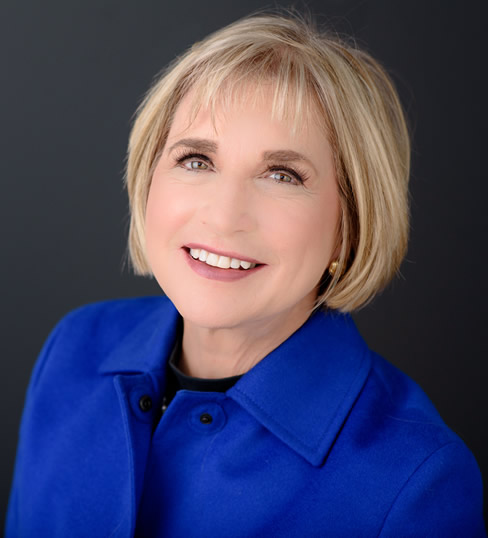Last week, the U.S. Department of Housing and Urban Development (HUD) and the Federal Housing Administration (FHA) made a series of new housing program limit announcements including a new reverse mortgage limit for FHA-backed loans.
Fannie Mae and Freddie Mac saw an increase in the conforming loan limits for 2024, while the forward and reverse mortgage industries saw new, higher limits for the upcoming year. The Home Equity Conversion Mortgage (HECM) limit will be $1,149,825 in 2024.
While most reverse mortgage professionals reacted positively to the news of a higher limit, the attitude was not universal according to some of the perspectives gathered by RMD from industry professionals about the new HECM limit for 2024.
A quick call for ‘good news’
For some loan officers who had to deliver bad news to prospective reverse mortgage borrowers earlier this year saying the terms wouldn’t work out, now some of those same loan originators can go back to certain clients with better news, according to Shelley Giordano, director of enterprise integration at Mutual of Omaha Mortgage.

“If it is true that interest rates will be declining, thus improving principal limit factors (PLFs), combining this with the higher limit will favor those loan officers who were meticulous in keeping data on customers they [may have been] unable to help [before],” she said. “It would be just a phone call to deliver the good news.”
Jonathan Scarpati, SVP of wholesale lending at Finance of America Reverse (FAR), also sees the new limit as a win for the business on either the HECM side or the proprietary side with its HomeSafe product suite.
“This is good news because it expands the number of older homeowners who can access their home equity with a reverse mortgage,” Scarpati told RMD. “At the same time, lending isn’t one-size-fits-all and options are important. The HECM product is great for those within the loan limit, while HomeSafe products open up the options even further enabling our wholesale partners to cast a wider net and help more homeowners.”

Tane Cabe, president of reverse mortgage lending at Fairway Independent Mortgage Corporation, sees the new limit as a development that adds resiliency to the space after a challenging year.
“The 2024 HECM loan limit expansion emerges as a resilience-building measure,” Cabe told RMD. “This move is poised to help more seniors, offering a pathway to navigate financial challenges and potentially increase market activity. We believe the increase will help more borrowers both for purchase and standard HECMs. We are especially excited to help more seniors in high-cost areas purchase their dream retirement home using a HECM.”
Not a ‘loan limit’
The HECM limit is erroneously referred to as a “loan limit” or “maximum claim amount (MCA) limit,” according to Dan Hultquist, author of reverse mortgage educational books like “Understanding Reverse” and “Navigating Reverse.”
“Those are terms used on the forward side because forward limits certainly do limit a traditional borrower’s maximum loan amount and/or loan balance,” Hultquist told RMD. “On the reverse side, however, a borrower may live a long time and/or experience growth in their loan balance or their line of credit. This growth can result in a future loan balance that far exceeds the HECM Limit established for the calendar year in which they obtained their FHA case number.”
The speed of the new limit’s release impressed Hultquist, he said.

“Prior to 2022, we had become accustomed to waiting at least a week into December for the Mortgagee Letter to make it official,” Hultquist explained. “This quick action on the part of FHA helps loan originators as well as software companies prepare for the new year.”
The new limit creates a unique opportunity for “update calls” to those who may have been previously turned down for a reverse mortgage, Hultquist said, echoing some of Giordano’s perspective.
“By my calculations, a borrower with a home valued at the new HECM limit, or higher, will see an increase in principal limit of approximately $23,000 depending on the lender margin,” he said. “However, rates have come down in recent weeks. When you combine the recent drop in the 10-year CMT with higher HECM Limits, the change in principal limit could be closer to $45,000.”
HECM origination on higher value homes, while questioned among some industry pros, does make sense for some areas outside of California and presents low-risk opportunities for the Mutual Mortgage Insurance (MMI) Fund, Hultquist said.
“We need to encourage the use of the product for non-needs-based purposes,” he said.
Higher limit, lower originations?
However, not everyone agrees that the new limit is a business growth opportunity.
“Raising the MCA does not increase HECM originations, it decreases HECM originations,” said Michael McCully and Joe Kelly, partners at New View Advisors. “HECM volume fell 33% from 2021 to 2023, even though HUD raised the MCA 18% in 2022 and 11% in 2023. It is unlikely raising it another 5.6% for 2024 will help lenders originate more HECMs. Raising the MCA also increases HECM program risk by increasing geographic concentration in riskier housing markets.”
Particularly in a rising rate environment, the limit’s increase has the “unintended consequence” of diverging upfront mortgage insurance premium (MIP) and borrower proceeds, the partners said.
“[Initial MIP] is going up while net borrower proceeds are going down,” they explained. “This is a big reason overall HECM origination volume is falling. PLFs have dropped approximately 20% since interest rates have risen from their 2022 lows, yet borrowers could pay a maximum upfront MIP of $23,000 next year, up from $16,500 in 2021. The program has been plagued by a ‘high cost’ reputation since inception; raising the MCA exacerbates this problem.”
Content found in FHA’s 2023 Annual Report to Congress also illustrates “an additional divergence over time as HECM lending limits rise; for those who reported race, the share of HECMs serving minority borrowers versus white borrowers has decreased,” the pair said.
Approximately 25% of HECM loans in 2009 served Black, Hispanic and Asian borrowers. Recent FHA data shows that these borrowers make up less than 13% of the currently-served cohort of HECM borrowers, they said.
“Because California has the highest property values in the nation, another consequence of the ever-increasing MCA is [the] California concentration in HUD’s portfolio of Secretary’s Notes and its potential negative impact to the MMI Fund.”





